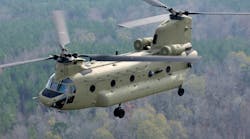by John Keller
PICATINNY ARSENAL, N.J. — U.S. Army experts are trying to embed microscopic electromechanical machines in paint that could detect and heal cracks and corrosion in the bodies of combat vehicles, as well as give vehicles the chameleon-like quality of rapidly altering camouflage to blend in with changing operating environments.
Officials of the Army Tank-automotive and Armaments Command's Armament Research, Development and Engineering Center (TACOM-ARDEC) at Picatinny Arsenal, N.J., are working with scientists at the New Jersey Institute of Technology in Newark, N.J., to develop nanotechnology-based "smart" coatings for Army vehicles and other materiel.
Unlike today's paint coatings on battlefield vehicles, Army experts seek to develop paints with the ability to self-correct because of changing circumstances and tell the user of potential anomalies such as corrosion or adhesion problems.
Today's conventional paints are labor intensive to apply, and potentially hazardous to the people working with them, Army officials say. In addition, most of these coatings need to be touched-up by hand, which can hide damage to the metal or other substrate material.
As a result, Army leaders estimate the total cost for U.S. Department of Defense corrosion-related problems at $10 billion per year — $2 billion of which is related to painting and paint-scraping operations.
To rectify these problems experts from Picatinny and the New Jersey Institute of Technology plan to develop a prototype paint with nanomachine powders consisting of tiny machines that act as gears, motors, and electronic switches at the atomic level.
These "smart" paints should be able to alert maintenance technicians of potential problems with the coating, in addition to modifying their physical characteristics on command.
These future "smart" coatings will involve far more, however, than simply brushing on paint from a can, points out Joe Agento, program integration manager at the TACOM-ARDEC Industrial Ecology Center at Picatinny Arsenal.
"Rather than paints, we are talking about coatings, which could be electroplated, or put on with physical vapor deposition qualities. We are talking about more things than paints. They could be metallic or have other qualities," Agento says.
"We're trying to prototype a coating to replace the primers and top coats we use today, and develop a one-system coating that incorporates nanomachines within the coating itself," says Laura Battista, environmental engineer at the Industrial Ecology Center.
"Now we are looking at the first stage — a coating with nanomachines," Battista says. "We want to determine what the nanomachines are that we need; we still have to determine what that nanomachine would be — switches, motors, or gears — to allow the coating to change on command."
Vehicle operators might quickly change the camouflage paint scheme on vehicles with "smart" coatings with an electrical impulse, Battista explains. "What we hope this coating can do is amazing. We're also looking at making it seem invisible."
Researchers will begin by determining what the properties of a "smart" coating would be. Later, researchers would develop a prototype, before applying the coating to a tank or other Army vehicle, Battista says.
A prototype "smart" coating may be developed as early as 2005, she says. "Once you already have the properties of the coating, such as the camouflage properties, we hope that changing the camouflage is as simple as changing pixels in the coating; it shouldn't be that difficult," she says.
Assuming that researchers receive the necessary funding, Battista speculates that "smart" coatings might be deployed with active combat forces sometime between 2005 and 2009.


